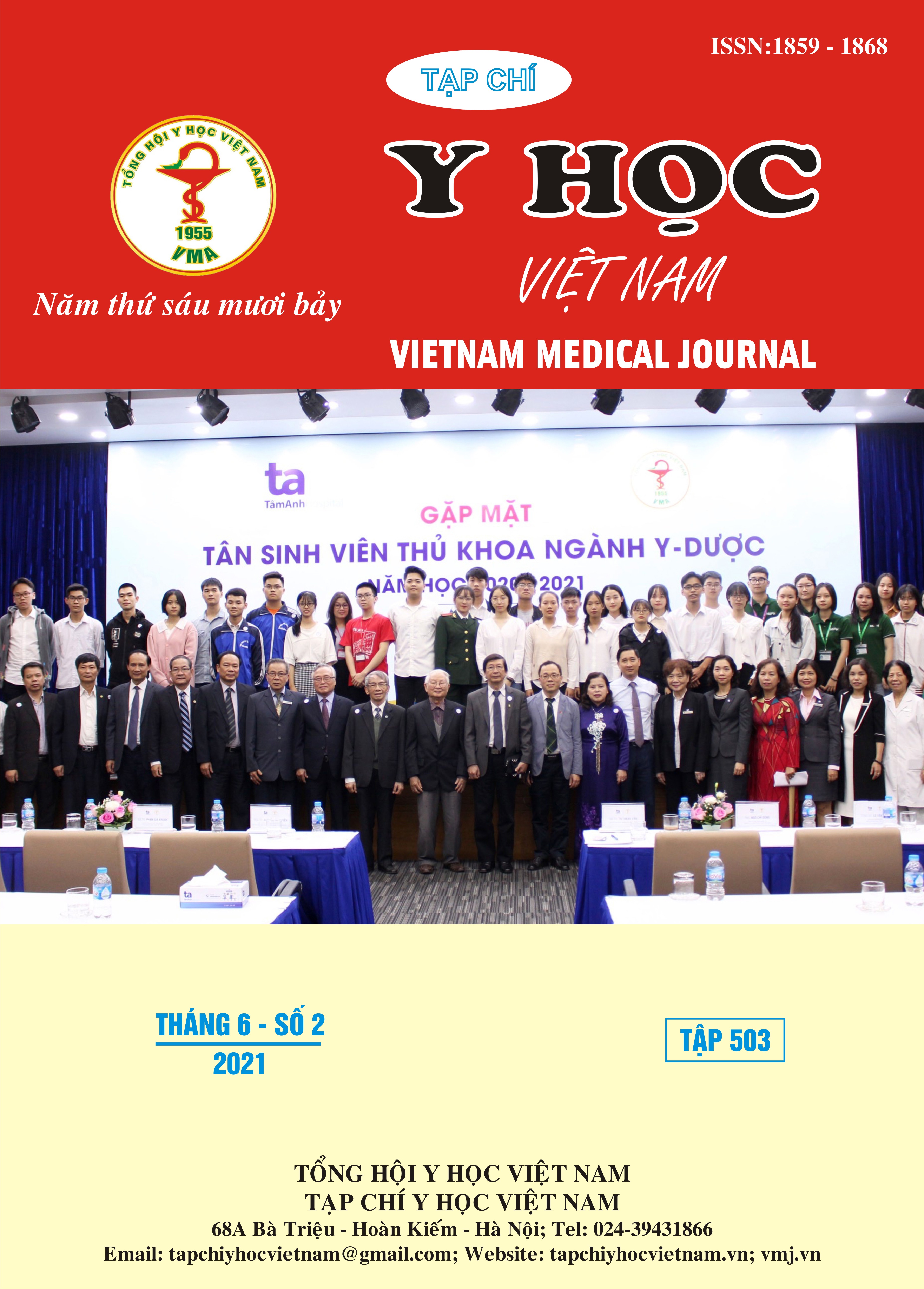POST-THROMBOTIC SYNDROME IN PATIENTS AFTER SURGICAL TREATMENT OF LOWER EXTRIMITY DEEP VENOUS THROMBOSIS
Main Article Content
Abstract
Objectives: To investigate the incidence of post-thrombotic syndrome in the patients after sugical treatment of lower extrimity deep venous thrombosis. Methods: Descriptive cross-sectional study in patients who had lower extremity deep vein thrombosis at iliac-femoral segment undergoing surgical treatment (open thrombectomy and endovascular intervention) after in the Thoracic and Vascular department, UMC, Ho Chi Minh City from January 2016 to December 2020. Results: 65 patients were treated with surgical thrombectomy; 50 patients were treated with endovascular intervention. The mean age was 47.3 ± 15.0 years old. It was accounted for 39.1% patients in the age from 40 to 60 years old. Most of the patients had complete thrombosis on contrast-enhanced computed tomography scan (98.3%). May-Thurner syndrome accounted for 68.7%. Of 28.9% patients was confirmed with post-thrombotic syndrome after treatment. This rate in the open thrombectomy group was 30.2% and the endovascular intervention group was 26.5%. There was no statistically significant difference in the rate of post-thrombotic syndrome in the 2 groups (p=0.72). There was a statistically significant association between time to onset and post-thrombotic syndrome: patients with symptom onset > 7 days had an increased rate of post-thrombotic syndrome compared with the group < 7 days with p = 0.004. There is a statistically significant association between obstructive lesions and post-thrombotic syndrome. (p<0.001). Conclusion: Post-thrombotic syndrome had been need follow-up after treatment of acute lower extremity deep vein thrombosis.
Article Details
Keywords
deep vein thrombosis, post-thrombotic syndrome
References
2. Kahn S.R., Partch H., Vedantham S., et al (2009), “Definition of post-thrombitic syndrome of the leg for use in clinical investigations: a recommendation for standardization”, Journal of thrombosi and haemostasis, 7, p.879-883
3. Park C, So BJ (2015). “Long-Term Results of Catheter-Directed Thrombolysis Combined with Iliac Vein Stenting for Iliofemoral Deep Vein Thrombosis”. Vasc Specialist Int., 31(2): 47-53. doi: 10.5758/vsi.2015.31.2.47.
4. Patrick H. Carpenter, Peter Gloviczki (2017), “Outcome assessment in acute venous disease”, Handbook of Venous disorders, 4th edition pp.763
5. Kahn S.R, Kearon C, Julian JA, et al (2005), “Predictors of the postthrombotic syndrome during long-term treatment of proximal deep vein thrombosis”, J. Thromb Haemost, pp.718-23.
6. Cornwall JV, Doré CJ, Lewis JD (1986), “Leg ulcers: Epidemiology and aetiology”, Br. J. Surg, pp.693-6
7. Hölper P, Kotelis D, Attigah N, Hyhlik-Dürr A, et al (2010), “Longterm results after surgical thrombectomy and simultaneous stenting for symptomatic iliofemoral venous thrombosis”. Eur J Vasc Endovasc Surg., 39(3): 349-55. doi: 10.1016/j.ejvs.2009.09.028. Epub 2010 Jan 8. PMID: 20060755
8. Ignatyev IM (2020). “Surgical Thrombectomy for Treatment of Acute Iliofemoral Venous Thrombosis”. Austin J Surg. 7(1): 1242.


